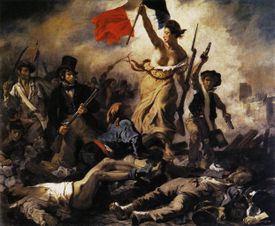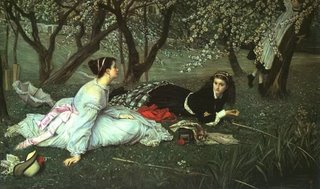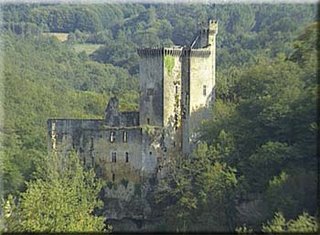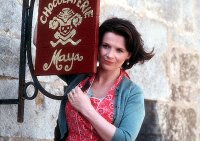
This past week we celebrated The Day of the Woman, and what better example of womanhood than Marianne, the French icon and symbol of freedom, equality and brotherhood.
This national emblem of France is present everywhere but holds a place of honor in town halls and law courts. She symbolizes the "Triumph of the Republic", a bronze sculpture overlooking the Place de la Nation in Paris. Her profile stands out on the official seal of the country, is engraved on French euro coins, and appears on French postage stamps; it also was featured on the former French franc coins and banknotes. Marianne is in fact considered one of the most prominent symbols of the French Republic.
The name
Marie-Anne was a very popular name amongst the women of 13thC France - but only amongst the commoners, not the aristocracy, so when the people looked for a name that stood for a change of government, an inspiration in the revolution, the 'mother of the nation' who would nourish and protect the people of the republic -
Marianne was the popular choice.

Why is it a woman and not a man who represents the Republic? - an interesting question often asked. One could find the answer to this question in the traditions and mentality of the French, suggests the historian
Maurice Agulhon, who in several well-known works set out on a detailed investigation to discover the origins of
Marianne. A feminine allegory was also a manner to symbolise the breaking with the monarchical regime headed by men. Note also that
liberté, égalité, fraternité,
république and
France are feminine words in French, and that, even before the French Revolution, France or the Kingdom of France were embodied in feminine figures, as depicted in certain ceilings of Palace of Versailles.

After the fall of the monarchy, the Provisional Government had declared: "The image of liberty should replace everywhere the images of corruption and shame, which have been broken in three days by the magnanimous French people." Two "
Mariannes" were authorised: the one is fighting and victorious, recalling the Greek goddess Athena; the other is wise and serious. She wears the Phrygian cap, which, since antiquity, was regarded as an emblem of freedom --the
Phrygian cap was worn during the Roman Empire by former slaves who had been emancipated by their master and whose descendants were therefore considered citizens of the Empire. This usage is often considered the root of its meaning as a symbol of liberty. (In Byzantium, Anatolian
Phrygia lay to the east of Constantinople.)

Today
Marianne remains as attractive as ever. She even has grown younger. The official busts, after having had anonymous features, began taking on the features of famous women during the Fifth Republic: the first was
Brigitte Bardot in 1970, with the design of the sculptor Alain Gourdon, aka Aslan, who reportedly did the job initially as a joke. She was followed by
Mireille Mathieu (1978, Aslan again),
Catherine Deneuve (1985), Inès de la Fressange (1989) and
Laetitia Casta (2000). In late 2003,
Évelyne Thomas, a talk show host, was chosen as the new
Marianne Blue-white-red, Marianne, Liberté-Egalité-Fraternité, the Republic
Blue-white-red, Marianne, Liberté-Egalité-Fraternité, the Republic: these powerful national symbols represent France and its values. Since September 1999, they have been combined in a new "identifier" created by the French government of
Lionel Jospin under the aegis of the French Government. As a federating identifier of the government departments, it appears on a wide range of material – brochures, internal and external publications, publicity campaigns, letter headings, business cards, etc. – emanating from the government, starting with the various ministries and the préfectures, decentralised government departments in the regions and départements.
 The first objective targeted by this design is to unify government public relations. But it is also designed to give a more accessible image to a State currently seen as abstract, remote and archaic, all the more essential in that French citizens express high expectations of the State.
The first objective targeted by this design is to unify government public relations. But it is also designed to give a more accessible image to a State currently seen as abstract, remote and archaic, all the more essential in that French citizens express high expectations of the State.
Click on Link:
Chateau Lalinde : The perfect venue for your event
TAGS: Events in a chateau
Marianne :Symbol of the French Republic
Rent a chateau France
Special Events Chateau Lalinde Perigord Dordogne Holidays in France French Icons and Emblems
la liberté, l'égalité et la fraternité!
Not just the soothing coo-ing and scratching of the pigeons in the open gutter outside my window (- as they had kept me company through the long winter), but the gentle clear song of the swallows, excited at their return to the eaves of the chateau, darting to and fro, inspecting last year's nests and what restoration work needs doing, and discovering new sites for brand new homes.





















































